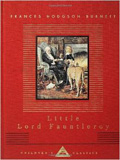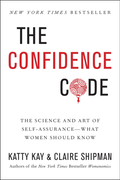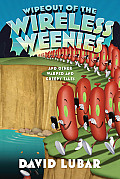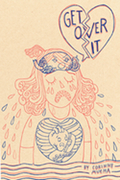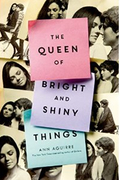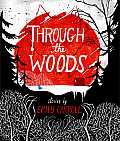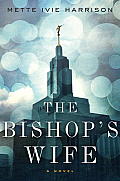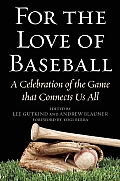Link to this review in the form of a comic strip by rosie tagged classic
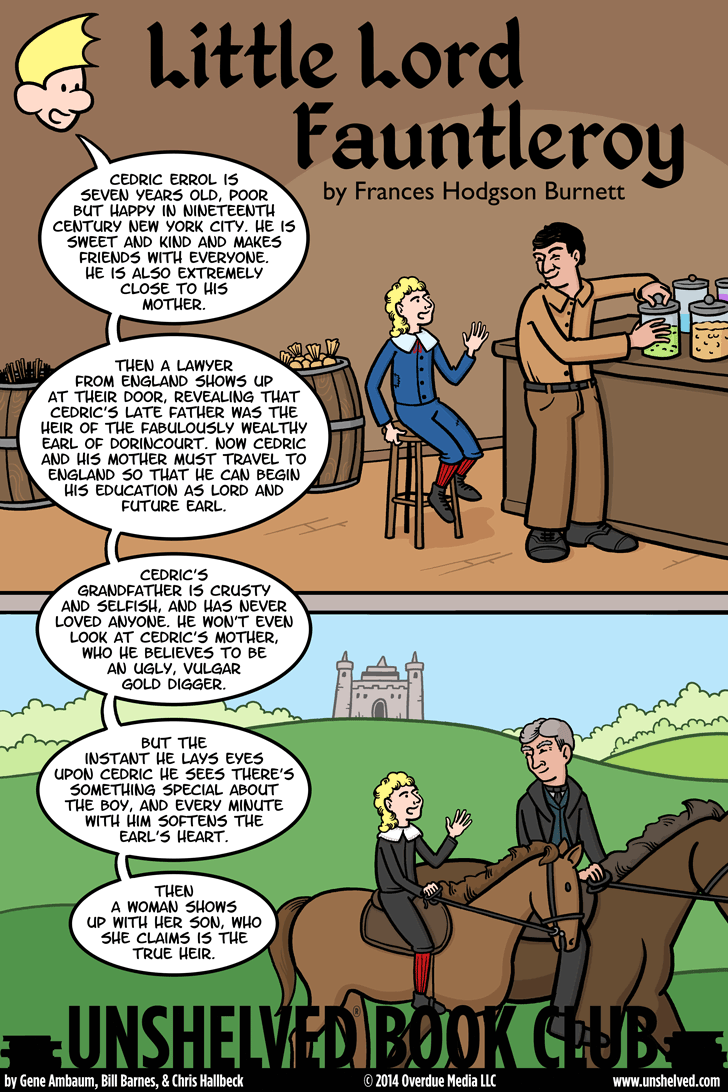
Click for the full-sized comic
@bookblurb Cedric Errol, the happiest little poor boy in New York City, is heir to the Earl of Dorincourt
Link to this review by emilyreads tagged nonfiction
Successful journalists Kay and Shipman explore the nature of confidence, specifically as it relates to women in the workplace. Is it a genetic thing? Are women naturally less self-assured than men? Can it be learned? Picking up where Sheryl Sandberg’s Lean In left off, the authors seek practical and realistic ways for women to achieve parity in the workplace by developing and displaying greater confidence.
Why I picked it up: I read an excerpt in the May 2014 issue of The Atlantic that made me all HULK SMASH. How could we, as a society, systematically reward men for unwarranted overconfidence and punish women for self-effacing prudence? I had to read more.
Why I finished it: Although the narrative frame of “here’s our research, and here’s the story behind our research” grew tiresome at times, it did provide a welcome assurance that every woman, even those like the authors who seem to have their lives completely together, experiences moments of insecurity and self-doubt. It’s not a mark of failure.
It’s perfect for: My friend Natalie, a high school senior who’s one of the most poised and articulate women I know. I’d be curious to know if she has experienced any of the doubts or discriminations the book recounts, and if not, why not. Could we, as the authors propose, be preparing for a generational shift in favor of women’s strengths and instincts?
@bookblurb An exploration of the nature of confidence as it relates to women in the workplace.
Link to this review by wally tagged horror • short stories
David Lubar presents his seventh collection of short, creepy stories for kids, offering a number of surprisingly gruesome (but not too scary) endings.
Why I picked it up: I’ve read a couple of Lubar’s novels, but none of his stories for younger kids.
Why I finished it: The stories fly by — none lasts more than about five pages. Some of the endings have that moral tone that you find in The Twilight Zone stories. In one story a girl who lives in a tough neighborhood takes her teddy bear on a walk around the block. When three mean boys take her bear away and tear off its head, they release a bully-eating demon. Others involve technology in new and frightening ways, such as when a boy helps his dad by sending out a fax. He gets caught in the machine and ends up sending out hundreds of copies of himself. In the title story, a girl wants a smart phone so she can be just like everyone else in her class. But when a giant, squid-like amoeba emerges from the ground and devours all her classmates while they try to look up ways to defend against or avoid giant squid-like amoebas, she has a slight change of heart.
It’s perfect for: Dasha, who loves Goosebumps. Plus she has cats, so she’d like the story about the girl who procrastinates cleaning the cats’ litter box for so long that the clumps take on a life of their own.
@bookblurb A collection of short, creepy, not-too-scary stories for kids.
Link to this review by geneambaum tagged biography • graphic novel
When she was twenty-three, Mucha followed her boyfriend to Chicago. After five months living together there, they broke up. This graphic novel is the story of their breakup.
Why I picked it up: Mucha’s My Alaskan Summer blew me away with its unexpected combination of charming cartooniness and old-school inking techniques.
Why I finished it: Part One starts with a charming scene of Mucha and her boyfriend in bed, joking and making plans for the next day. It’s wonderfully intimate and goofy and made me love them as a couple despite knowing what was coming. On the next page, Mucha asks, “Hey, can I ask you something?” No good question is ever prefaced with this question. (If you ever meet me at a conference, ask me about the last time my mother started a conversation with this gambit. It was heinous.) The turn in the story is immediate. When she asks where there relationship going it is truly, as the page says, the beginning of the end, and it took me right along on its emotional roller coaster.
Readalikes: Fanny & Romeo, the story of a breakup where a woman has to decide between her cat and her boyfriend. (I bet you’ll root for the cat like I did.)
@bookblurb Corinne Mucha moved to Chicago with her boyfriend. They lived together for five months before they broke up.
Link to this review by flemtastic tagged coming of age
Sage has lived with her Aunt Gabby since her father died in a car accident. She feels pressure to be easy to live with, since she doesn’t want her aunt to return her to foster care. Sage exudes positivity, which can get her ridiculed at school, especially for her habit of putting encouraging Post-It notes on the lockers of students who need a lift. She doesn’t care, though. When she helps a new student, Shane, who is being picked on by some football players, she earns the enmity of one of them, Dylan.
Sage has to work hard to stay positive; her relationship with her best friend is on the rocks and her budding interest in Shane is tainted by Dylan’s threats to expose her secrets.
Why I picked it up: I have read four of Ann Aguirre’s books — the three book series that started with Enclave as well as Mortal Danger. I thought this was another fantasy novel, so I was willing to jump right in.
Why I finished it: This character-driven book skillfully introduces Sage and her situation. The details, like how she tries to please her loving Aunt Gabby by springing up to do the dishes each night, make her feel real because inside she is still insecure after her time in a group home. When she is at school, students call her the “Post-It Princess” because she chooses to continue putting notes on lockers even though she rarely gets feedback. There is a bit of romance, too, which I have to admit sucked me in. Sage’s would-be boyfriend is a soulful guitar player, which doesn’t do anything for me, but I liked that he had some prickly points, like his inability to let others do anything for him. Every time I thought I had figured out where the story was going, it surprised me.
Readalikes: Matthew Quick’s Sorta Like a Rock Star, which also featured a young woman trying to overcome a difficult past through strength of will and by being positive. Both books made me root for protagonists who were let down by people close to them yet soldier on. Eventually each realizes how many people they touched through their efforts. (There’s a moment when Sage hears from a student who was considering suicide, then she got a Post-It that changed her mind.)
@bookblurb Sage feels pressure to be pleasant and positive, despite the fact that she’s ridiculed at school.
Link to this review by geneambaum tagged short stories • graphic novel • horror
Five creepy, short comics. In “Our Neighbor’s House,” three sisters await their father’s return from a hunting trip. Then two of them disappear in the night. “A Lady’s Hands Are Cold” features a new bride awoken by a ghost, which speaks of being married and murdered. In “His Face All Red,” after a man and his brother go into the forest and kill an unknown beast plaguing their town, both return. The only problem is the man’s brother is dead. The man knows because he killed his brother.
Why I picked it up: The dust jacket is wonderfully textured; the black silhouettes of trees in the middle distance are rough, and the skeletal, white tree branches in the foreground pop out from them both visually and to the touch. I had to open it. Then the inside the jacket copy got me, too: “It came from the woods. Most strange things do.”
Why I finished it: The stories gave me goosebumps, and I guarantee they will give any kid nightmares if read around a campfire. The truly horrifying moments don’t just come at the end of each story, either. In some ways the freakiest image in the book is a picture of a man eating a bloody piece of meat at dinner. It might be enough to turn you vegan.
It’s perfect for: My friend Jennifer, who has a fear of small spaces. She would be totally freaked out by “The Nesting Place,” which starts in a cave. (She probably would also have issues with the burrowing monsters that make their homes inside people.)
@bookblurb Creepy, short comics that would be great to read around the campfire.
Link to this review by sarahhunt tagged art
From the website Crappy Taxidermy come stuffed creatures who will spend the rest of their afterlife looking uncomfortable, stunned, or way too happy.
Why I picked it up: The very pointy fox on the cover!
Why I finished it: It’s not just another collection of blog photos. The author consulted a creative taxidermist to make a basic, mouse-stuffing tutorial just for the book using humanely killed mice, pipe cleaners, clay, and pins.
It’s perfect for: It might be a little to creepy to take to a middle school class, but I think the students at the alternative high school who are interested in mortuary work might be willing to broaden their horizons to posing mice in charming tableaux.
@bookblurb Taxidermy photos of strangely posed and weirdly expressive dead animals, along with a tutorial.
Link to this review by flemtastic tagged mystery
Linda Wallheim’s husband Kurt is the bishop of their Mormon church ward. She ministers along with her him, organizing dinners and funerals, counseling women, and standing by her husband. A young mother disappears without taking any of her possessions and without the young daughter she was devoted to. Linda comes to believe that the hot-tempered husband may be involved in her disappearance. Though Kurt tries to dissuade her, Linda does some rudimentary detective work while in the house caring for the daughter. At the same time, she is comforting a woman after her husband’s death from cancer. The widow is having difficulty reconciling her life as his longtime second wife, never sealed to him for eternity in the Temple. While helping clean at the widow’s house, Linda finds a disturbing clue that will bring explosive secrets out of the past.
Why I picked it up: I had read and reviewed a few books on the Mormon Church, so when a friend saw this book he recommended it to me. It was written by a practicing Mormon woman and inspired by a real crime.
Why I finished it: Harrison carefully crafts the clues to lead organically to a big plot twist and a change in direction later in the book that feels earned and believable. Not every writer is skilled enough to pull that off!
It’s perfect for: Hattie, a practicing Mormon. I’m curious about and how she deals with some of the more unusual beliefs of the church, which are brought up by Linda in the course of her ministry with her husband. (She says that some Mormons, for example, believe that their special underwear makes them bulletproof. She also explains that they believe they can be baptized as a proxy for a dead relative who wasn’t baptized and may be floating in limbo, to give that person a chance to move on to Heaven.)
@bookblurb The wife of a Mormon bishop investigates the disappearance of a young mother.
Link to this review by danritchie tagged essays • nonfiction
This is a wonderfully eclectic collection of essays about the game of baseball and its unique place in our social fabric. Each article (by a different author) has its own perspective: some factual, some nostalgic, many celebrating the social history of the game.
Why I picked it up: I read the forward by one of my childhood heroes, Yogi Berra. Fifty years after the end of his playing career, his observations from the cheap seats made me want to know more.
Why I finished it: I have been a baseball fan all of my life, but never so much as when I was a youngster. Many of the essays brought back the wonder of the game for me while giving me new insights, like how a championship in Pittsburgh in 1960 changed the nature of the fan experience from a social interaction to obsessive compulsion. The book also included the “biography” of a baseball glove and its owner, an explanation of the worldwide appeal of the baseball cap, and stories about old stadiums like the Polo Grounds in New York, where both the only on-field player death and the only in-stands gunshot fatality (by a stray bullet from a nearby rooftop) took place.
It’s perfect for: My brother-in-law, who is always either listening to or attending a Mariners game. A serious student of the game, he will appreciate the variety and depth of these essays about everything from the 216 slightly raised red stitches on a baseball to the improbable story of the first black umpire, Art Williams.
@bookblurb A collection of essays about baseball and its place in American life.
